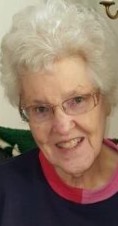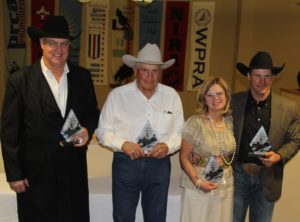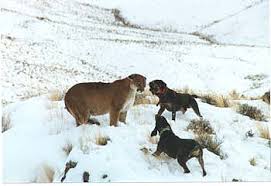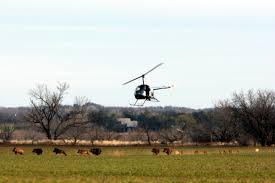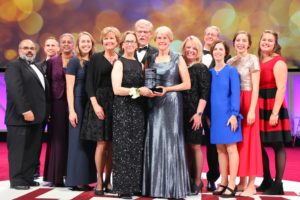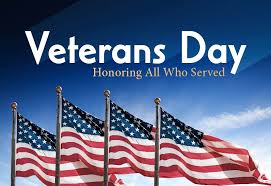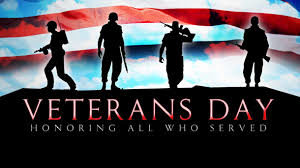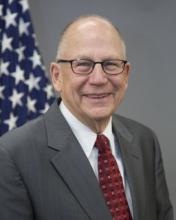
After 22 years with the United States Attorney’s Office, Randolph J. Seiler has announced his retirement. Seiler will bid farewell on December 31, 2017.
Randy Seiler was nominated in 2015 by President Barack Obama as the 41st United States Attorney for the District of South Dakota. He was sworn in on October 8, 2015, by U.S. District Judge Roberto Lange at a ceremony at the U.S. Courthouse in Pierre, South Dakota.
Prior to his appointment, he served as both Acting and Interim U.S. Attorney, and also as the First Assistant United States Attorney and the Tribal Liaison for the District of South Dakota. As First Assistant, Seiler was responsible for the day-to-day management and operation of the U.S. Attorney’s Office. He also supervised the U.S. Attorney’s branch office in Pierre, where he was directly involved in prosecutorial matters and decisions. As Tribal Liaison, he consulted and coordinated with tribal justice officials and leaders, tribal communities, and victim advocates in an effort to address any issues in the prosecution of major crimes in Indian country in South Dakota.
Seiler has had a distinguished career as an Assistant U.S. Attorney. He spent 14 years prosecuting violent crime offenses. In 2001, he received the Department of Justice Attorney General’s Award for Fraud Prevention. In 2009, he became the first recipient of the Department of Justice Director’s Award for Superior Performance in Indian Country. In 2008, Seiler also served as Council to the Director in the Executive Office for U.S. Attorneys at the Department of Justice in Washington, D.C. He has been an instructor at the National Advocacy Center in Columbia, South Carolina, as well as a presenter at numerous conferences and trainings on various topics including violent crime, sexual assault, domestic violence, and legal issues in the prosecution of violent crime in Indian country.
Some highlights of Seiler’s tenure as U.S. Attorney include:
· The number of cases filed and defendants charged has risen significantly over the past three years, with approximately 200 more in both categories since 2014.
· Established a dedicated Civil Rights Section within the office, spearheaded by a Civil Assistant U.S. Attorney. In addition to enforcing federal civil rights statutes, the Civil Rights Section strives to educate community members about their rights under federal law by engaging in outreach programs throughout the state.
· Instrumental in the inception of the Guardians Project Task Force, which is designed to enhance federal law enforcement effort to expose fraud and public corruption in Indian country, by uniting the expertise and resources of the participating thirteen federal investigative agencies.
· Made drug prosecutions one of the office’s top priorities by committing the U.S. Attorney’s Office to work with and coordinate drug task forces across South Dakota, including the newly created Northeastern South Dakota Drug Team. The District of South Dakota is now among the top ten federal judicial districts for drug prosecutions, based on population. This is a marked change from ten years ago, when South Dakota was not in the top ranks.
· Revised the management structure of the SD U.S. Attorney’s Office to include more women and minorities, and has hired minorities as Assistant U.S. Attorneys and Special Assistant U.S. Attorneys, providing a more diversified approach to the offices’ priorities and focus.
· Created “Walk-In Wednesday”, wherein a representative of the U.S. Attorney’s office is on-site at Pine Ridge each Wednesday. Seiler implemented this initiative to allow citizens to more easily communicate with the office concerning crime on the reservation, inquire about existing cases, or to obtain any information which might be sought by the citizenry.
· Extended outreach in Indian country by holding community listening sessions, meeting with Tribal Councils, appointing Tribal Prosecutors as Special Assistant U.S. Attorneys, and implementing a “First Friday” call with Tribal Chairmen.
· Initiated regular community based outreach meetings in Sioux Falls and Rapid City discussing such topics as civil rights, officer involved shootings, frauds and scams, immigration, and hate crimes.
· Started a reentry program in the U.S. Attorney’s Office to address the high rates of recidivism.
Prior to joining the U.S. Attorney’s Office in 1995, Seiler was in private practice in Mobridge, South Dakota, where he practiced criminal and civil law. He was appointed by the South Dakota Supreme Court to the Board of Pardons and Paroles and also served on the State Board of Education. He was elected to three terms on the Mobridge School Board and also served as a Special Judge for the Cheyenne River Sioux Tribe. Most recently, Seiler served his community as a member of the Fort Pierre City Council.
Seiler grew up in Herreid, South Dakota, served his country in the U.S. Air Force, which included a year-long tour in Vietnam, and graduated with honors from the University of South Dakota School of Law. He and his wife, Wanda, live in Fort Pierre, and have four grown children and two grandchildren.
Following his resignation as U.S. Attorney, Seiler plans to practice law in Fort Pierre, and pursue other opportunities.

